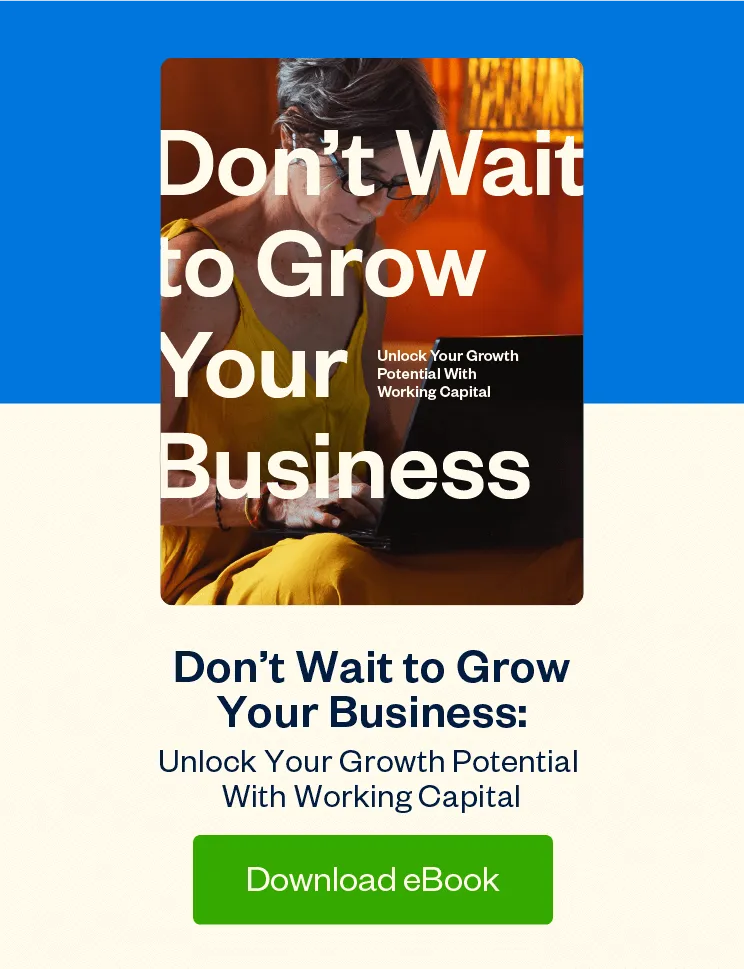Even if you’re in the midst of growing too fast, there are some ways to alleviate those growing pains.

As you know all too well, getting a small business up and running is a major challenge. And even when your upstart business is officially “started up,” many small businesses struggle to survive their first two years. Not to mention the fact that a business growing too fast can actually be as disastrous as a business that never really takes off.
The U.S. Small Business Administration shows that about 30% of small businesses have to shut their doors within their first two years of setting up shop. While this struggle is common, you’ve surpassed this tenuous stage and your business is even growing.
The fact is, you may be experiencing the opposite problem—you’re growing at a pace that makes it tough to keep up. And you’re not alone.
Although many small businesses fail, many others are thriving. Going into 2018, small businesses anticipated growing revenues 9.1% on average. And while this kind of rapid growth is exciting, it can quickly become a stumbling block if it isn’t sustainable. When an owner and their operations can’t keep up with the pace of growth, their systems and services can break down.
There are some telltale signs that your business is growing too fast, and we’re rounding up the most common growing pains below. Even if you’re in the midst of growing too fast, there are some ways to alleviate those growing pains—and we’ll go through the most effective strategies here.
Six Symptoms Your Business Is Growing Too Fast
1. Cash Flow Crunch
One of the first telltale symptoms of unsustainable growth is a clogged cash flow. While the demand for your products or services might be high, your business’ cash flow is lagging behind.
A cash flow crunch can create a host of other issues and is a common concern for businesses. According to a recent survey from Wasp Barcode Technologies, the majority of small businesses of all sizes said that cash flow was one of their top five obstacles.
Some of the unmistakable signs of cash flow issues include:
- Multiple outstanding invoices. When unpaid invoices start stacking up, it’s easy for those outstanding payments to fall through the cracks. While you have plenty of demand, if your clients aren’t paying on time, that can leave you in the lurch when it comes to working capital.
- Missed payments to vendors/partners. Dropping the ball when paying your vendors is a definitive sign of cash flow issues. For example: When you need to wait for your invoices to be paid in order to pay your vendors or partners.
- Messy financial systems. While you may have mastered the basics of payroll and accounts receivable, the bigger your business, the more complicated your financials get. The more work you have coming in, the harder it is to keep track of sales, invoicing, and expenses in and out. And the more complex your financials, the more complicated your tax reporting (and the higher the chance of errors). But that’s where an accounting system can help.
All of the above can indicate that you have major gaps in your cash flow and likely have outgrown your current financial systems.
2. Compromised Customer Service
The second sign your business’ growth is outpacing your ability to keep up is declining customer service. Demand is high, your to-do lists are long, and you and your employees are multitasking (i.e., doing too many things and none of them well).
This kind of environment is often a breeding ground for waning customer service. When your customer service staff is spread too thin, they can’t offer a high level of customer service.
When you’re too busy to give your customers the service they deserve, they’ll notice. They’ll likely flee and tell other prospective customers. According to recent research, more than half of customers will ditch working with a company after one bad experience.
Without additional support via outsourcing, the right tech stack or the right employee investment, important tasks like customer service can fall through the cracks. So it’s no surprise that ongoing subpar customer service will ultimately hurt your business.
3. Hiring a New—or the Wrong—Employee to Solve Every New Problem
When growing your business, it’s only natural that you’d expand your team. Hiring new talent can help you solve big problems within your business, and strategic hiring can help you scale sustainably.
When your business is growing at a gruelling pace, it can be tempting to hire on the fly just to have an extra set of hands. But hiring without a plan can lead to bringing on new employees without the right experience, or with values that don’t align with yours.
Hiring an unnecessary new employee—or even worse, the wrong employee—costs you serious time and money. According to Glassdoor research, the average U.S. company takes upward of 52 days to fill a position and spends about $4,000 to bring on a new employee. All that time and expense is a waste if a hastily hired employee is a poor fit and leaves within six months. This can also lower your current employees’ morale and waste valuable training time.
Rather than hiring the wrong workers just to fill seats, take some time. Pay close attention and assess whether it’s time to outsource some of your projects rather than hire a full-time employee.
4. Everything Is Urgent and Important … but ‘Nothing’ Gets Done
In a fast-growing business, your time and resources are limited. As a result, sometimes even important tasks fall by the wayside.
No matter how much overtime you and your team put in, you can’t get on top of the workload. You and your staff can’t ever seem to catch up, which means that every task that doesn’t need to get done immediately goes on the back burner. Then all your tasks are both urgent and important, but you never make any headway with your ever-growing to-do list.
An inability to get ahead of your projects can cause your team to miss deadlines, and eat into your profits as tasks take longer to complete.
5. You’ve Outgrown Your Tech Stack
Fast-growing businesses need technology and tools that perform and scale as you do. But chances are, if you’re still working with entry-level software, you don’t have the support you need as you grow.
That might mean your technology doesn’t:
- Have all the features you need to perform at the next level in your business growth
- Have a user-friendly interface that makes it intuitive for all your team members to use
- Integrate well with other tools you use on a daily basis
- Allow you to automate the most tedious or manual tasks
If this is the case, it’s likely time to upgrade your tech stack (but don’t fret, we’ll talk more about that below).
6. The Future Isn’t Clear
When your business is growing too quickly, you likely focus on making it from one day to the next. When you’re focused on ticking off items on your to-do list, you’re simply surviving in the present.
That leaves little time to shift your focus from just surviving right now to how you can thrive in the future. It’s tough to nail down important long-term goals for your business, or even envision what you want for your business five or ten years down the line.
Without a clear vision for the future, it’s easy for your business to go off the rails while you’re sprinting to keep up with your exponential growth. So it’s important to ask some tough questions to assess this symptom:
- Has your business hit all your goals for the month, quarter and/or year? And what are your high-level goals for the future?
- Has your business moved in the direction you expected?
- Are you still aligned with your business plan?
Don’t leave long-term planning on the back burner because you’re distracted by short-term success. Harness your current success and capitalize on it to build a bright future for your business.
How to Overcome Your Growing Pains
Even if you’re struggling to keep up with the aforementioned growing pains, you can still work your way toward sustainable growth.
1. Track Your Finances
As your business and revenue grows, make sure you have the tracking and execution you need to make your money matters simpler.
That might mean taking some time to assess your current finances, putting new systems in place and potentially outsourcing these tasks to a professional. Upgrade your financial tools to ensure you can track your expenses, complete payroll, send invoices and collect payments.
2. Invest in Hiring, Onboarding and Retention
To improve customer service and to prevent any panicked hiring sprees, create a long-term plan to expand your team.
Create a strategic hiring plan that focuses on smart talent acquisition, onboarding and training, and retaining all those great employees you hire. And when creating your hiring plan, consider these factors:
- Prioritize hiring for specific positions. What teams need support the most? Which are understaffed? And where will a new hire make the biggest impact?
- Weigh hiring versus outsourcing. Assess whether a part-time employee or a freelancer could fill the gaps to get your business through this high-growth period. Does it make sense to outsource certain tasks, like marketing or advertising, and hire for others?
- Hire for potential as well as experience. Sometimes the best person for the job just hasn’t started doing the work yet. Make sure that when you’re hiring, you’re looking at the potential growth of new hires. Not just where they’ve been on their resume.
- Promote internally. Rather than looking outward for talent, it often makes more sense to hire from within. Share opportunities with current employees to gauge interest.
- Invest in employees. Training and general investment in current employees can increase engagement, boost productivity and lead to higher retention.
3. Get the Right Tech Stack to Streamline Operations
Tackling the needs of your growing business is easier when you have the right tools to do the job. So it’s likely time to assess and upgrade your tech stack.
But before you start signing up for new software subscriptions, take some time to:
- Understand your current and future needs. When looking at new tools, ask: Do they have features to help you complete tasks now and also grow as you grow?
- Do an audit. Familiarize yourself with all the tools you currently have in place. Which technology is working, and which isn’t? And are there any gaps in features?
- Leverage automation. Free up more of your team’s time by leaning on tech to do some of your manual tasks. Look for tools that can help you automate some of your to-do list so you can focus on actually running your business.
4. Get a Strategic Growth Plan in Place
Stop surviving the present and focus on the future with a strategic growth plan. Sitting down to create a growth plan is a forcing function in itself—you have to envision a high-level future and formulate long-term goals to put it together.
When creating a strategic growth plan, you’ll solidify your goals for the next few years for your business. You’ll also break down the steps needed to achieve those goals and identify the corresponding success metrics to keep you accountable.
You can use a template like this one from CMG to get you started.
Find Your Footing Even When Your Business Is Growing Too Fast
If the aforementioned symptoms sound all too familiar, then it’s time to take a step back and examine your business as a whole. Just because your business is currently in an overwhelming rapid growth phase doesn’t mean you can’t find your footing again.
Using the strategies outlined above, you can scale sustainably, and achieve a more stable and sustainable pace of growth.
This post was updated in March 2020.

Written by Lindsey Peacock, Freelance Contributor
Posted on July 17, 2020

 11 Ways to Increase Productivity and Reclaim Time with Cloud Accounting
11 Ways to Increase Productivity and Reclaim Time with Cloud Accounting How to Invest in Your Employees and Fuel Revenue Growth
How to Invest in Your Employees and Fuel Revenue Growth Automated Billing: How Growing Businesses Are Managing a Large Customer Base
Automated Billing: How Growing Businesses Are Managing a Large Customer Base





